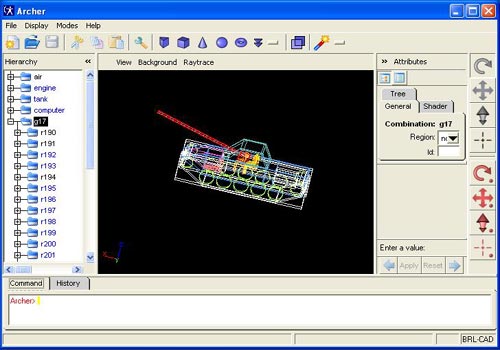

Choi, The target modeling and the shot line analysis system to assess vulnerability of the ground combat vehicle, Transactions of the Society of CAD/CAM Engineers, 20 (3) (2015) 238–245.

Captain, Vulnerability Assessment Using a Fuzzy Logic Based Method (1993).Ĭ. Taylor, A Fuzzy Set Approach to Vulnerability Analysis, Army Ballistic Research Laboratory, BRL-TR-2697 (1985). Jee, The study of vulnerability assessment method using fuzzy-theory in conceptual design phase of combat aircraft, Proceedings of the Conference of The Korean Society for Aeronautical and Space Sciences (2012) 812–817. Lee, A development of hit probability-based vulnerability analysis system for armored fighting vehicle using fault tree analysis technique, Journal of the Korea Institute of Information and Communication Engineering, 19 (8) (2015) 1981–1989. Lee, Integrated survivability assessment given multiple penetration hits, Journal of Ocean Engineering and Technology, 28 (1) (2014) 69–76. Park, A development of 3D penetration analysis programfor survivability analysis of combat system: Focused on tank model, Journal of the Korea Institute of Information and Communication Engineering, 19 (1) (2015) 244–250. ITT Corporation, COVART 6.0: User’s Manual, ITT Corporation, Report No. Edwards, BRL-CAD Tutorial Series: Volume 4 - Converting Geometry Between BRL-CAD and Otherformats, Army Research Laboratory, ARL-SR-121 (2004). Kregel, BRL-CAD Tutorial Series: Volume III Principles of Effective Modeling, Army Research Laboratory, ARL-SR-119 (2003). Dykstra, The BRL-CAD Package: An Overview, Army Re-search Laboratory, ARL-RP-432 (2013). In order to improve the accuracy of the analysis of the shot line, which was used only to identify the penetration, we conducted the shot line analysis for the ricochet and deflection to enhance the accuracy of the vulnerability assessment. In this study, damage scenarios of sub-components are created and classified according to damage types such as a type of components, hit position, damage cause and result, etc., and damage rule is calculated and the damage probability of the sub-components is calculated. However, it is difficult to calculate the exact damage probability by penetration alone. The damage probability of sub-components is usually calculated only by the penetration. For the accuracy of the vulnerability assessment, it is important to accurately calculate the damage probability of sub-components. The damage probability of the component is calculated by the damage probability of the sub-components. The vulnerability assessment is calculated from the damage probability of the components of the target. By improving survivability, the interior of the GCV can be protected and the continuity of mission performance can be improved. Many functions are considered for the design of GCV (ground combat vehicles), which are carried out to increase the survivability of GCV from enemy threats.


 0 kommentar(er)
0 kommentar(er)
